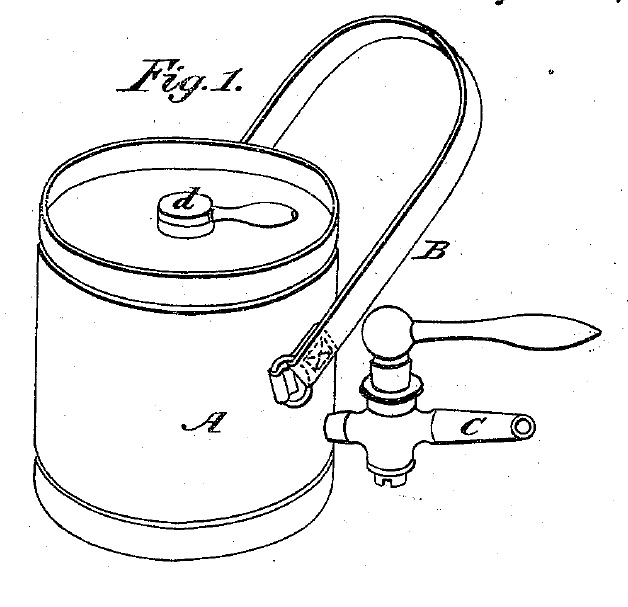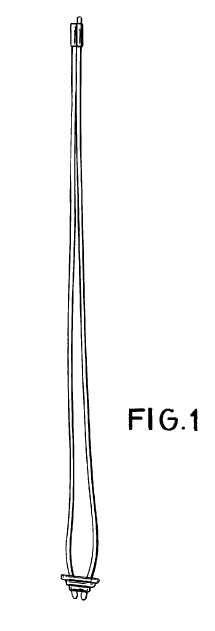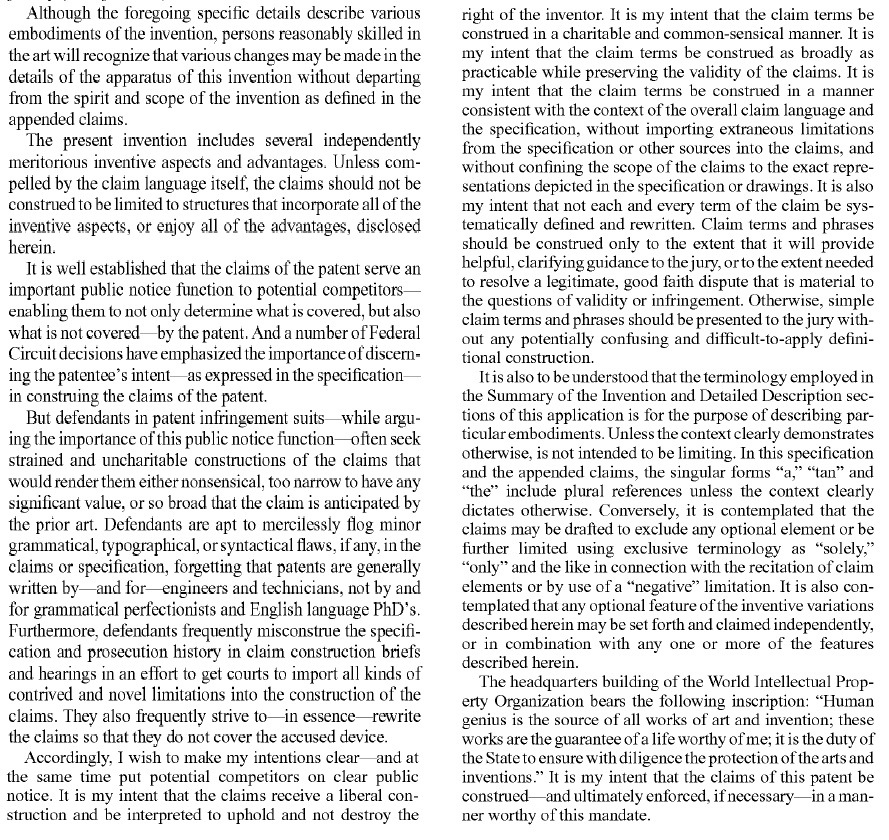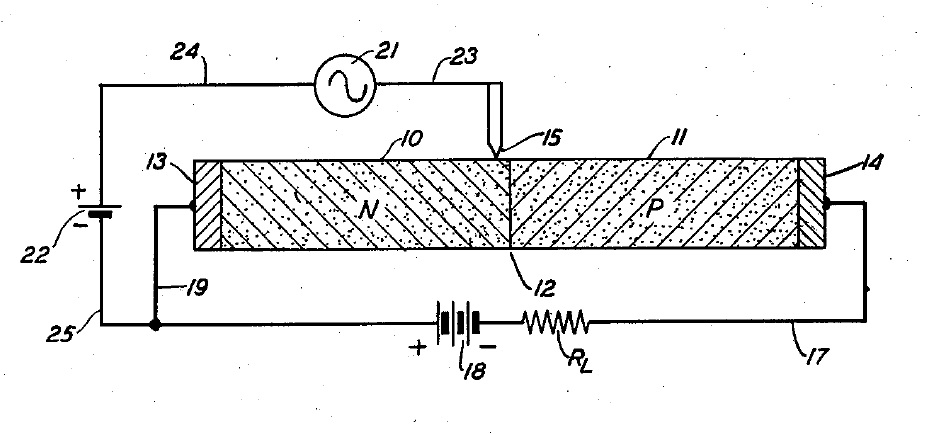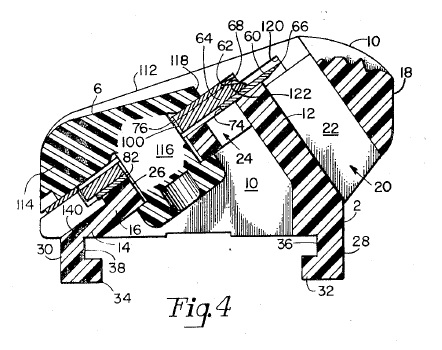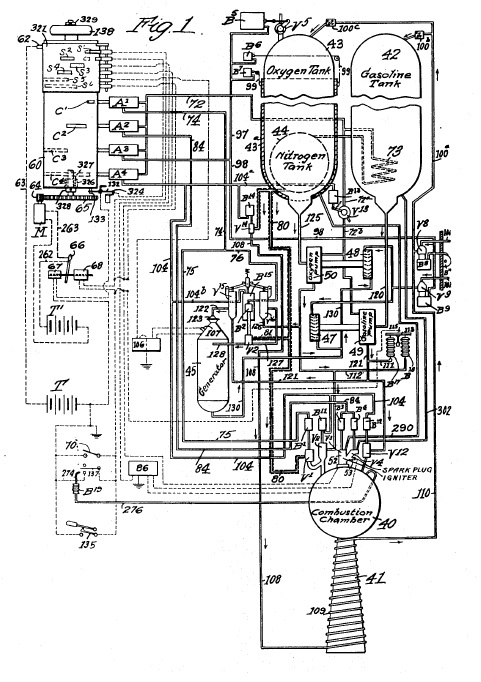On April 6, 1869, U.S. Patent No. 88,583 issued to William M. Parker on a Fire Extinguisher.
BRI Should Not Depart from What the Claim Language and Specification so Clearly Mean
In Pride Mobility Products Corporation v, Permobil, Inc., [2015-1585, -1586] (April 5, 2016), the Federal Circuit reversed the PTAB’s construction and cancellation of claim 7, but affirmed cancellation of all the other claims of U.S. Patent Nos. 8,408,598 and 8,408,343 in IPR2013-00407 and IPR2013-00411.
At issue was the claim language “mounting plate [that] is substantially planar and is
oriented perpendicular to the drive wheel axis.” The Federal Circuit said it was unreasonable to read that straightforward language as meaning anything other
than that the drive-wheel axis is perpendicular to the surface of the mounting plate that makes the plate substantially planar. The Federal Circuit explained:
The claim language says two things about the plate: it must be substantially planar, and it must be oriented perpendicular to the drive-wheel axis. The “oriented” term allows the plate and axis not to be touching: it requires that their placement in space must be such that, if translated in space without rotation, they would be perpendicular. With the axis idealized as a line, perpendicularity in the ordinary geometric sense relevant here requires that the axis make a right angle with either an essentially one-dimensional feature (a line or curve) or an essentially two-dimensional feature (a plane or surface) of the plate: lines are not “perpendicular” to a three dimensional object in any other ordinary geometric sense. And the claim tells us exactly what that feature of the three-dimensional plate is: it is the surface that makes the plate substantially planar. The claim identifies no other feature of the plate. The phrase “oriented perpendicular to the drive wheel axis” must be read to mean that the drive-wheel axis is perpendicular to the mounting plate’s substantially planar surface. We do not see how the claim language can mean anything else without obvious strain.
The Federal Circuit said that the Board’s sole basis for its claim construction does
not reasonably support a departure from what the claim language and specification so clearly mean. There was no evidence of the claim 7 element in the relied-on prior art. Because there is no other Board ruling or properly preserved argument addressed to this element, the Federal Circuit reversed the cancellation of claim 7.
We’ll Say it Again: Redundancy is not Reviewable
In HP Inc., v. MPHJ Technology Investments, LLC, [2015-1427] (April 5, 2016) the Federal Circuit affirmed the PTAB Final Written Decision in IPR2013-00309, agreeing that all but one challenged claim (claim 13) of U.S. Patent 6,771,381 was anticipated, and holding that it cannot review the Board’s decision not to review that claim as obvious, on redundancy grounds.
The Federal Circuit noted that under 35 U.S.C. § 314(d), the determination
by the Director whether to institute an inter partes review shall be final and nonappealable. The Board rejected HP’s arguments, including that 314(d) only barred review of findings under 314, namely where there is a reasonable likelihood that petitioner would prevail; that § 314(d) does not bar review of whether the Board has properly construed the scope of its authority; that the Board lacks authority to grant review on only a subset of properly presented grounds; that the Board did not fulfill its obligations under the APA; and finally that the Board did not adequately explain redundancy.
All is not lost for HP, however, as the Federal Circuit repeated its statement from its recent Shaw decision that estoppel does not apply to grounds that are not instituted, and thus “HP is not estopped from raising the obviousness of claim 13 in a subsequent court or Board proceeding, and a challenger cannot assert that the nonobviousness of claim 13 was resolved by the Board in this proceeding.”
Equitable Estoppel Stops NPE From Asserting Patents that its Assignor Failed to Assert
In High Point SARL v. Sprint Nextel Corporation, [2015-1298] (April 5, 2016), the Federal Circuit affirmed summary judgment that equitable estoppel and laches preclude prosecution of High Point’s claims for infringement of United States Patent Nos. 5,195,090, 5,195,091, 5,305,308, and 5,184,347. High Point is an NPE that acquired the patents from successors of AT&T and Lucent.
The Federal Circuit held that the district court did not abuse its discretion
in determining that equitable estoppel precludes High Point from bringing this case against Defendants. The Court said that three elements must be established for equitable estoppel to bar a patentee’s suit:
- the patentee, through misleading conduct (or
silence), leads the alleged infringer to reasonably
infer that the patentee does not intend to enforce
its patent against the alleged infringer; - the alleged infringer relies on that conduct; and
- the alleged infringer will be materially prejudiced if
the patentee is allowed to proceed with its claim.
The Federal Circuit concluded that High Point’s predecessors’ misleading course of conduct caused Sprint to reasonably infer that they would not assert the patents-in-suit while Sprint purchased unlicensed infrastructure to build its network. The Court said that misleading conduct occurs when the alleged infringer is aware of the patentee or its patents, and knows or can reasonably infer that the patentee has own of the allegedly infringing activities for some time. The Federal Circuit said that the evidence showed both silence and active conduct.
The Federal Circuit also agreed with the district court that Sprint detrimentally relied upon the inaction of High Point’s predecessors.
Finally, the Federal Circuit agreed with the district court that Sprint were prejudiced by the delay, both economically because of continued investment in the accused technology, and through loss of evidence over time.
The effect of equitable estoppel is “a license to use the invention that extends throughout the life of the patent.”
Invalidity Determination Would Not Apply to Reexamination Claims That Did not Exist at Time of Judgment
In Cardpool, Inc. v. Plastic Jungle, Inc., [2014-1562] (April 5, 2016) the Federal Circuit affirmed the district court’s denial of vacatur, because the denial was within the district court’s discretion and also because the premise of the motion was both speculative and inaccurate.
The parties’ jointly requested vacatur was that all of the Cardpool patent claims had been replaced on reexamination, and that Plastic Jungle was no longer conducting the accused infringing activities.
The Federal Circuit, applying Ninth Circuit law, said that a district court’s denial of a Rule 60(b) motion is reviewed for abuse of discretion, and found that it was not an abuse of discretion to preserve its original decision, which was limited to the claims and grounds that existed at the time. The Federal Circuit further found that the premise of the motion was both speculative and inaccurate: the district court’s final judgment as to an original group of claims does not automatically render that judgment res judicata as to new claims granted upon reexamination. The Federal Circuit distinguished Aspex, noting that for res judicata to apply, it is necessary that the claim either was asserted, or could have been asserted, in the prior action. If the claim did not exist at the time of the
earlier action, it could not have been asserted in that action and is not barred by res judicata. A prior judgment cannot be given the effect of extinguishing claims which
did not even then exist and which could not possibly have been sued upon in the previous case. The Federal Circuit said that the issue of validity of the reexamined claims remains to be addressed in any future proceeding, and found that the district court did not abuse its discretion refusing to vacate the judgment as to the original claims.
April 5 Patent of the Day
A Plea for a Charitable and Common-Sensical Claim Construction
All manner of boiler plate can be found in patent applications and issued patents, placed there by applicants and their counsel hoping to influence the future construction of their specification and claims, but the language in U.S. Patent No. 8,047,178, requests a “charitable and common-sensical” claim construction. Unfortunately, that’s probably too much to ask for.

